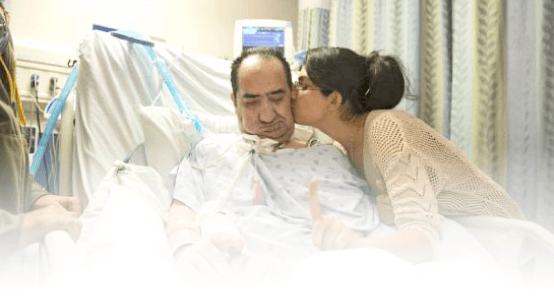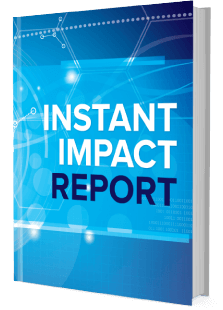Podcast: Play in new window | Download
Subscribe: Apple Podcasts | RSS
Hi, it’s Patrik Hutzel from intensivecarehotline.com with another quick tip for families in intensive care.
So, one of the most common questions we’re getting is, “What happens after cardiac arrest? What should happen? What does treatment look like?” And so forth. So, there are a few scenarios what can happen after cardiac arrest, and I want to run through them in this quick tip.
So, after cardiac arrest, people often get admitted into intensive care. They are unconscious. They might have had some sort of hypoxic or anoxic brain injury, depending on what’s being referred to as downtime. How long somebody needed to be resuscitated? How long it took to get a pulse back and oxygen perfusion of the organ? So, it really depends on that.
So then, when patients go into ICU, they might go into the catheter lab and there you can see, or you can detect, where’s the blockage of the heart muscle? Which coronary arteries are blocked? Does cardiac surgery need to be performed? Does it need a stent? Does it need a dilation of the coronary arteries? So, those are questions that can be answered initially before admission or on admission into ICU. But if a patient can go into catheter lab or not is also dependent on how unstable a patient is. So, it depends on whether they are on multiple inotropes or vasopressors already. So, it depends on all of that.
Next, some patients after cardiac arrest go into cooling therapy for 24 to 48 hours. Body temperature is usually being cooled down to 33 to 34 degrees for 24 to 48 hours. And then the patient is being warmed up again by 0.1 degrees of Celsius every hour. So, a very slow warm-up process. And the reason for the cooling therapy is that organs are protected for a period of time, including the heart.
Next, other things that then happen often after cardiac arrest is an ultrasound of the heart that can be done externally, or it can also be done with a TOE, a transesophageal echocardiogram through the esophagus. Camera is going down into the esophagus, sitting next to the heart and an ultrasound can be done that way. This is often done to determine ejection fraction of the heart.
Ejection fraction means the contractility of the heart is being assessed. And if it’s less than sort of 35, 30%, that’s very concerning then, patient is often inotrope or vasopressor dependent. Medications such as adrenaline, noradrenaline, dobutamine, milrinone, sometimes levosimendan are being used. For our audience in the U.S, often adrenaline is epinephrine, noradrenaline is norepinephrine or Levophed, and also levosimendan can be used to improve the contractility of the heart.
Other things that can happen is a PA (Pulmonary Artery) catheter or a Swan-Ganz catheter might be inserted into the pulmonary artery to determine cardiac output and cardiac index studies, again, to see how strong the heart can contract and pump. Mixed venous arterial gases are sometimes being done, again, to assess the functionality of the heart.
If all of that fails, sometimes patients can be put on ECMO for heart failure. Especially if the heart is really weak and not pumping properly, then ECMO can be commenced and ECMO (Extracorporeal Membrane Oxygenation) will take over the function of the heart for a period of time. And the heart might have time to recover to a certain degree.
Again, if all of that fails, maybe a heart transplant is next. If a heart transplant is next, the step from ECMO to a heart transplant is often to go on an LVAD (Left Ventricular Assist Device) or an RVAD (Right Ventricular Assist Device) to support either the left ventricle or the right ventricle, sometimes even both. And that can be used as a bridge to a heart transplant.
Now, also after cardiac arrest, sometimes heparin is started. Heparin is a blood thinner. If the reason for the cardiac arrest was a blood clot in the coronary artery so heparin might help with that, or thrombolysis might help with that in the beginning.
I really hope that helps.
There’s more to what should happen after cardiac arrest, especially when someone is on ECMO (Extracorporeal Membrane Oxygenation), LVAD (Left Ventricular Assist Device) or RVAD (Right Ventricular Assist Device) but I have done videos about that in the past. And you can go on our website at intensivecarehotline.com and type into the search box on our website about LVAD or RVAD or ECMO, and you will get some videos and blog posts there.
So, that’s my quick tip for today.
Now, if you have a loved one in intensive care, go to intensivecarehotline.com. Call us on one of the numbers on the top of our website, or simply send us an email to [email protected].
Also, have a look at our membership for families in intensive care at intensivecaresupport.org.
Now, like the video, subscribe to my YouTube channel for regular updates for families in intensive care, share the video with your friends and families, comment below what you want to see next or what questions and insights you have, and click the notification bell.
We also provide medical record reviews for patients in intensive care or after intensive care, if you want to find out whether there’s been medical negligence, we can help you with a review.
Thank you so much for watching.
And also, check out my YouTube live that I do every Saturday night, 8:30 PM, Eastern Time, U.S. time. YouTube live, where I usually talk about a specific intensive care topic for families, and also answer your questions live.
Thanks for watching.
This is Patrik Hutzel from intensivecarehotline.com and I will talk to you in a few days.



